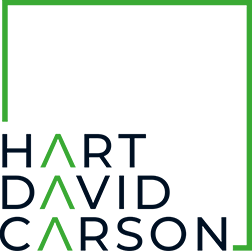DAOs have proven to be an effective way to build organizations without leaning on rigid hierarchical systems. However, the fact that they are somewhat uncharted territory means they may not receive the legal recognition that more traditional entities might enjoy. The result is increased scrutiny from governing bodies such as the SEC.
For this reason, sound governance practices are necessary when creating a DAO. Drawing on traditional models and adapting them to a decentralized entity can add legitimacy and stability to your organization while potentially decreasing liability.
1. Determine Your Purpose
As with any organizational structure, you’ll need to start with your purpose. The purpose of your DAO’s formation will inform the way you approach everything else. For instance, a collector DAO may require different asset curation protocols from DeFi organizations, whereas DeFi DAOs and those that focus on NFTs might focus more on risk management and liquidity.
In addition, you might not even need a DAO to accomplish your goals. If you don’t need a decentralized system with collective asset management and asset curation, then a more traditional model may be more appropriate for your purposes.
2. Choose the Right Incentivization Model
When a DAO is necessary, you’ll need to make sure you have an effective incentivization model in place. You need to attract people to purchase governance tokens and provide sufficient incentives—which may or may not be entirely financial—to perform tasks that help your organization grow.
Some incentivization models that have seen success in the past include:
- Growth Incentives, reward members with native tokens when they perform tasks that promote growth and liquidity.
- Yield Farming rewards tokens representing pieces of individual protocols, such as borrowing, staking, etc. for engaging with those protocols.
- Retroactive Aairdrops, reward early users retroactively for helping the DAO grow.
- Gamification, in which users are rewarded with in-game benefits and assets for accomplishing tasks relevant to the DAO’s growth and asset liquidity.
More innovative methods are being developed as time progresses, so your model may build on these, combine them, or consist of something entirely new.
3. Determine How Assets Will Be Used
The assets held by your DAO should be used to further your organizational goals. Some DAOs use their assets to fund development or provide insurance. In many cases, the structure of the DAO allows those assets to be more liquid than they would be in isolation, and this has natural benefits in terms of user acquisition.
In many cases, the decisions of how assets are to be used will be a matter of a member vote, but having some established protocols at the outset can help direct your organization toward success.
4. Thoroughly Consider Risk Management
Most DAOs have asset portfolios that largely consist of highly volatile assets. There’s a great deal of risk involved, and that means you need to make risk management a priority. Not only is this important to the profitability of your organization, but it can also minimize liability and avert penalties from governing bodies. Having an established risk management protocol in place demonstrates to authorities that you prioritize safeguarding the best interests of the people who have invested in your DAO.
Using tools to measure key metrics, running simulations to assess risk, and implementing preventive protocols can help minimize risk while protecting your organization in the event that it comes under scrutiny.
5. Maintain Decentralization when Hiring
Larger DAOs eventually need to hire full-time staff in order to maintain assets, handle administration, develop protocols, etc. When hiring, make sure it is done within the same decentralized incentivization model used by the rest of your members. The contracts implemented here also need to be carefully drafted to hold up under all applicable employment laws and regulations.
DAOs and Traditional Governance
While DAOs are highly innovative and governance best practices are still being developed, it’s not a bad idea to implement traditional governance tactics. These tactics have been tested over time, and they need only be adapted a bit to support a decentralized model. Over time, more jurisdictions may accept DAOs as legitimate legal entities, but one of the keys to reaching that point is to prove their viability. Sound governance practices can help achieve that.


